Siphonaptera
It’s a cliche that’s all too real: Your dog or cat is sitting in the corner scratching at its neck furiously, and you can practically see the little pests leaping off by the dozens.
Your best friend has fleas.
Fleas are tiny insects that feed on the blood of mammals, and they can be a pain – both because of the itchy bites they leave behind and how difficult it is to eradicate them.
An infestation is miserable for both you and your pet.

We link to vendors to help you find relevant products. If you buy from one of our links, we may earn a commission.
Don’t worry, the presence of these pests isn’t a sign that you’re neglecting your dog or cat, or that you aren’t a good enough housecleaner.
These critters have adapted over millennia to survive on your pets, and they’re good at it.
That said, if you notice them you need to take immediate action to get rid of them. The bites are bad enough, but they also spread diseases and parasites.
Let’s go over how to identify and deal with these common pests. Here’s what’s coming up:
What You’ll Learn
If you suspect your beloved pet is dealing with these awful interlopers, there’s no time to lose. Let’s first define what exactly a flea is.
What Are Fleas?
Fleas are wingless ectoparasites in the order Siphonaptera that feed exclusively on the blood of mammals and birds.
There are thousands of species worldwide and about 300 in the United States. The most common belong to the Ctenocephalides, Oropsylla, and Xenopsylla genera.

They usually measure between 1/16th to 1/8th of an inch in length, and have six legs that are adapted for jumping. They’re able to leap up to 200 times their length.
These pests live on or near the skin of their hosts, moving through the fur of the animals swiftly thanks to their narrow bodies.
Due to the backward-pointing combs and bristles covering their bodies along with their foreclaws, they’re able to anchor onto the host animal, making them difficult to dislodge.
They use barbed mouthparts called styles to penetrate the host’s skin to access the blood.
Life Cycle of Fleas
These pests have four life stages: egg, larva, pupa, and adult.
They thrive in warm, humid areas, and are less common in the winter, since temps below about 46°F will kill them. But so long as they have a host, they’ll survive through the cold months.
The eggs are oval and white, and are not sticky, so they usually fall off the host soon after they are laid and land in their bed – or on your furniture. That’s where all the good food for the larvae is, anyway. After about a week, depending on the species and environment, the eggs hatch.
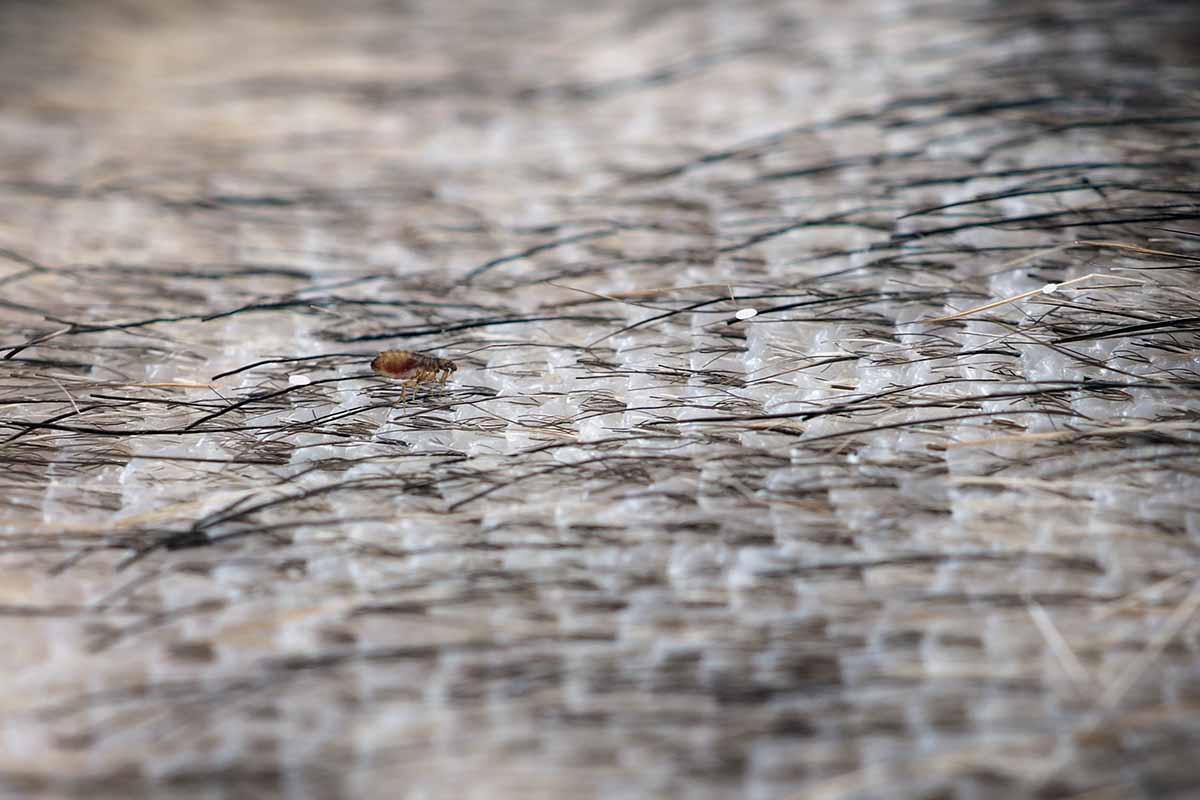
The larvae are an off-white color, legless, and usually no larger than one fifth of an inch long. They feed on debris like skin, dead mites, pet dander, and dried blood flakes. They also feed on adult flea feces that drop off the hosts.
Even if the eggs do manage to stick to the host, once they hatch the larvae will drop off and find a suitable environment.
After molting twice, they form a cocoon off the host and pupate.
This process of pupating takes about a month but can be up to three or four months, because emergence is triggered by the presence of a host.
When the pupae sense movement, heat, or carbon dioxide being exhaled, they emerge and latch on to the live host.
The adults use their light-sensitive eyes to identify dark silhouettes against a light background. So a dog moving through a field or a cat walking along a log, for instance, will catch their attention. When they spot a potential host, they leap.
When the adults feed, they probe the skin to find a tasty spot before digging in. That’s why you’ll often see several bites in a row. They can remain attached for up to an hour, until they’re engorged with blood.
Adults generally live up to 100 days, laying eggs several times, and the cycle continues.
Flea Identification
In many cases, the first time people realize their pets have fleas is not because they spot the critters themselves, but because they see other signs.
Perhaps that’s a series of strange bites on you or your pet’s body. If you discover bites on your ankles, it’s a pretty good sign that you need to take a closer look at your dog or cat.
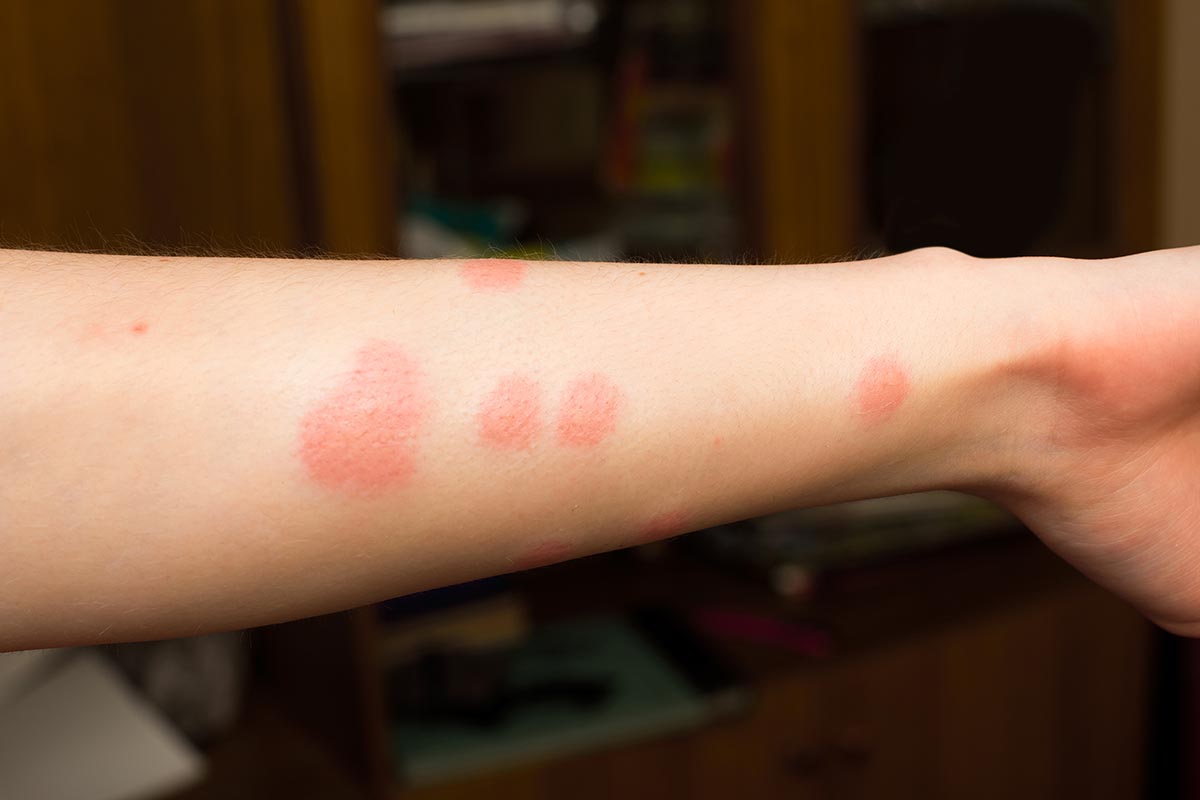
The bites can be intensely itchy, and both people and pets can develop allergies to them even if they’ve been bitten repeatedly for months without any evidence of an allergic reaction.
Pets will often scratch and chew at their bites, which can result in secondary infections.
Look closely at your pet’s skin, particularly on the stomach, where the hair tends to be thinner.
Part the hair to reveal the skin and look for dark, pepper-like flecks. This is flea poop.
You can wipe it with a damp paper towel, and if the towel comes away with red streaks, you can be fairly certain it’s their excrement.
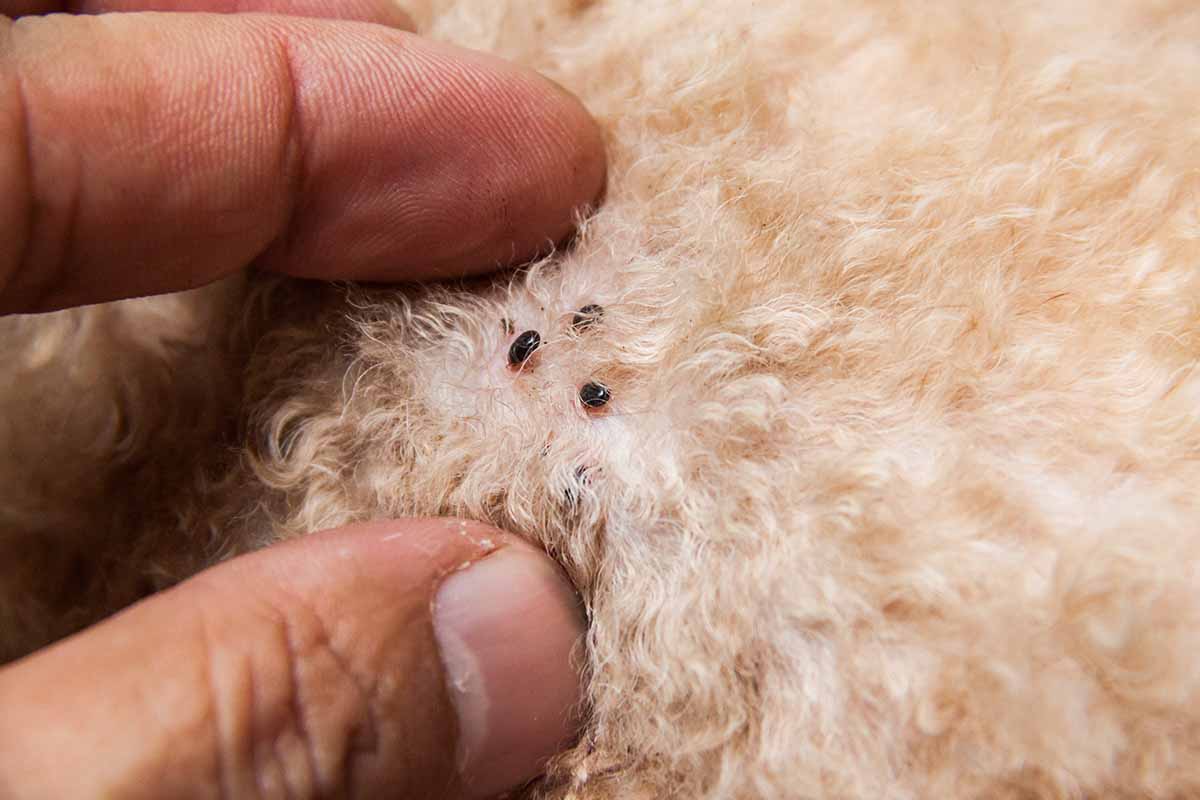
You might also see red areas or areas of thinning hair.
If you see a small, narrow insect scuttling through the fur, try to nab it and examine it closely.
These pests tend to mostly hang out on the rump, neck, and stomach, so be sure to check these areas thoroughly.
Can Fleas Feed or Breed on Humans?
I know what you’re wondering. Bothering your pet is bad enough, but can they harm you, too?
Some types of fleas do feed on humans, and a few will even hang out on humans if their preferred host isn’t available.
Fleas generally don’t love humans because we don’t have as much dense hair or fur as their favorite species. That means fewer places to hide out, and they can’t breed on humans.
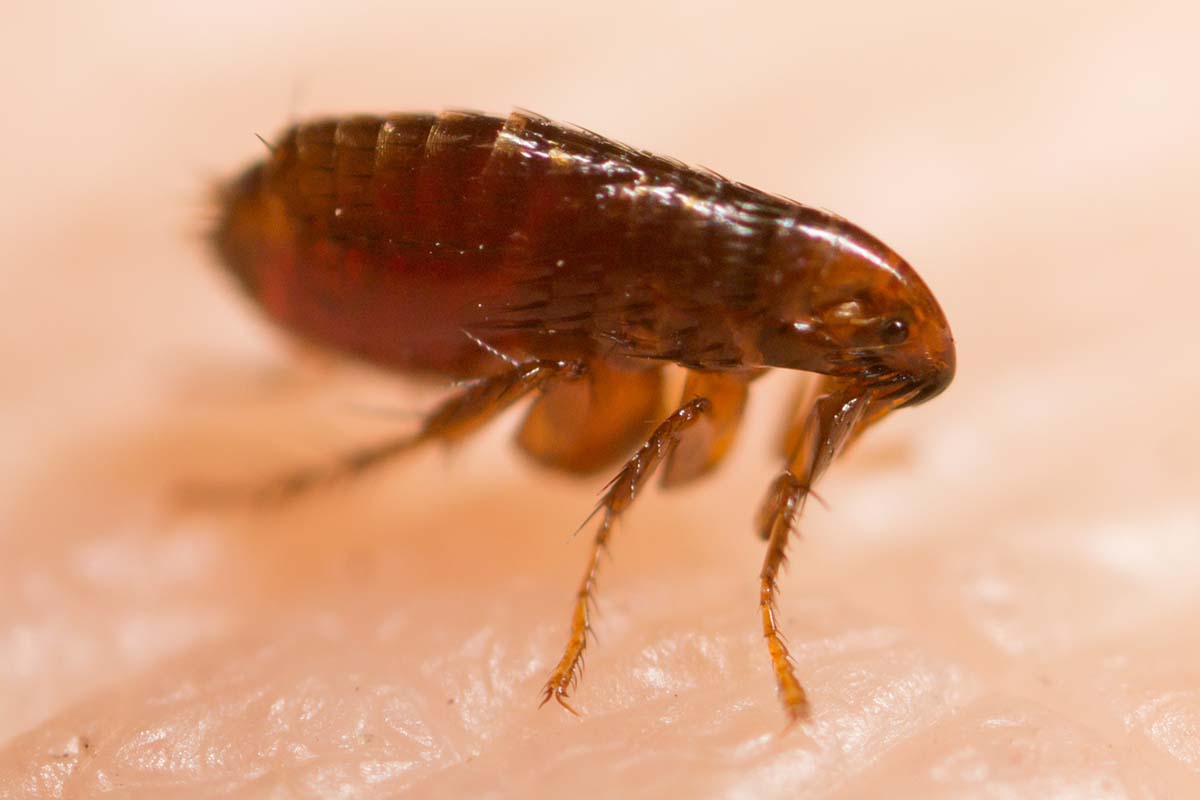
As long as your dog or cat is around, the critters will choose to live on them, not you.
But if your pet leaves for a week or two, or they are no longer living with you, some species might decide that you’re good enough, and they’ll hang out on you.
That’s rare, though. These pests prefer to live on their hosts because they needs to feed frequently – at least every few days. But if they can hunker down in your bedding and feed on you regularly, they can potentially breed without a host.
The exception to this is the human flea (Pulex irritans), which lives on humans and pigs. Luckily, these aren’t as common as the species you find on your pets.
This species doesn’t feed on dogs or cats, so your pets can’t bring these types into the house. If you see fleas on your pet, you can rest assured that they aren’t the human type!
Are Dog and Cat Fleas Different?
There are many different flea species in North America.
The most common are cat (C. felis), dog (C. canis), ground squirrel (O. montana), and rat fleas (Z. cheopis).
These pests also infest birds, with the western chicken (C. niger) and European chicken flea (C. gallinae) having the largest economic impact.
C. felis and C. canis can feed on both dogs and cats, but the dog species isn’t commonly found on dogs, oddly enough.
Cat fleas are more prevalent and in addition to dogs, they also live on foxes, opossums, rabbits, and even humans if a preferred host isn’t available.
Harm Caused by Fleas
The most obvious harm that fleas cause are the irritating bites that they leave behind.
If you’ve ever been bitten by a flea, then you know how itchy and sore it can be. Just imagine if the creatures were living on you and biting you all the time!
A friend’s dog was so aggravated by the constant biting that he became anxious and frustrated, and you can hardly blame him.
The itchiness and redness can last for weeks in sensitive individuals, and scratching can cause hair loss and leave scars, in addition to opening the skin and exposing it to viruses, bacteria, and fungi that can cause secondary infections.
In severe cases, an infestation can even kill young puppies or kittens by draining them of blood, causing anemia. They can also transmit tapeworms, further weakening your pet.
Speaking of, if you see evidence of tapeworms in your dog’s feces, do a flea check. These two pests go hand in hand.
These pests also spread disease. I once adopted a cat from a shelter, and as she was adjusting to her new home, she was startled by my dogs. I grabbed her to calm her down, and she bit me.
We named her Bite and moved on from the incident, but a few days later, I started feeling sick.
Turns out, I had cat scratch disease (CSD). I don’t blame Bite; she was just protecting herself and didn’t trust me, yet. I blame the fleas that she picked up at the shelter, which were likely the source of the disease.
I’m lucky that it wasn’t worse, since fleas can also (less commonly) spread plague and typhus.
Prevention
Dogs and cats usually pick up fleas from contact with other animals or from spending time outside.
To reduce the chances of an infestation, you’d need to limit outdoor time or contact with other animals. Build your cat a catio and keep it clean, or keep your dogs on leash and don’t go to busy dog parks.

That’s easier said than done, so it’s a good idea to bathe your animals regularly to wash off fleas and to check them thoroughly for signs of these pests.
If you do notice fleas, act quickly. It’s easier to tackle a small infestation than a large one.
Mow your lawn frequently and keep it low to expose hiding adult or juvenile fleas to sunlight, and keep flea-carrying mammals like squirrels, mice, rats, opossums, raccoons, and stray cats away from your property.
If you have to remove a dead animal from your property, be sure to wear gloves and wash your clothing as soon as possible. These blood suckers will be looking for a new host, and they might hitch a ride on you until they find the delicious warm body of your dog.
If you have vermin living in your attic, crawl space, or other area attached to your home, get rid of them. They can harbor the pests, and they can transfer to your pets.
I wouldn’t dream of keeping my standard poodles confined indoors.
One of them opens the door in the morning and suns herself in the lawn for a good half an hour before she’s ready to face the day.
My boy does a daily patrol of the entire fence perimeter to see if any cats or raccoons have visited, and it’s the highlight of his day. Especially if he catches the scent of a recent visitor.
If your pets are like mine, they’re going to encounter fleas on a regular basis.
In that case, you’re going to need to use a preventative treatment. Depending on where you live, you might need to use it year-round.
If you’re dealing with an active infestation but your dog isn’t regularly exposed to areas where these pests live, you can often get away with treating them once and be done with it. Unless they return, of course.
Let’s look at the available options.
Flea Treatment Options
There are many products on the market for treating fleas, from mechanical removal options to repellents and poisons. Some serve as treatment for an active infestation only, where others are long-acting and work as a preventive.
Whichever you choose, in the case of an infestation all of your pets must be treated at the same time.

In addition to treating your pets, you’ll need to vacuum and sweep your home regularly, including your floors and furniture, to get rid of the adults, eggs, pupae, and larvae.
Don’t forget to clean the baseboards, corners, edges of the walls, and under furniture. Empty the bag or bin in an outdoor garbage can immediately after you finish.
Don’t assume that just because you’re using a repellent or pesticide on your pet or in the home, you can skip this step.
Vacuuming is key in controlling an infestation – it not only sucks up the adults, larvae, pupae, and eggs, but it also removes the larvae’s food source. Plus, the vacuum triggers the flea to emerge and seek out the host. Just think of how clean your house will be.
Wash any bedding that the pet comes in contact with immediately and at least once a week thereafter.

Flea collars work by repelling the insects, and they also kill any that come in contact with it. Unlike treatments that enter the circulatory system of your pet, the flea doesn’t need to bite the host to be poisoned.
Some flea collars are extremely affordable, while others can be quite expensive. In this case, you tend to get what you pay for.
They often contain ingredients like the pesticides imidacloprid and flumethrin that spread along the dog’s skin.
Products like Seresto® work extremely well and last up to eight months. I use these on my dogs and they’re highly effective, even when we hang out with other dogs carrying fleas.

If you’d like to try it, Amazon carries the large dog size in one or two packs.
Oral treatments and preventatives are chews or pills that you give to your pet. These contain a neurotoxin, such as lufenuron, that enters the circulatory system of the host and paralyzes fleas when they feed.
A flea receives a dose when they suck your pet’s blood.
Some of these treatments contain additional ingredients so they can also tackle other problems like heartworms and intestinal parasites, making them multi-purpose.
Capstar is a treatment that contains the neonicotinoid nitenpyram and starts working in 30 minutes and can rapidly kill a large percentage of the pests on your pet within a day.

Pick some up in six or 12 count packs made for either dogs under 25 pounds or over 25 pounds at Amazon.
Note that this product is not long-acting and is suitable for use as a treatment for an active infestation, not a preventive. A version for cats is also available.
Flea sprays or powders are another option.
They contain insecticides like orthoboric acids that repel or kill fleas on contact, and are generally effective until your pet gets wet, at which point reapplication would be necessary.
The problem with something like boric acid is that it only works on larvae, since adult fleas don’t consume anything but blood.
Bombs, sprays, and powders aimed at killing fleas in your home rather than on your pet aren’t as effective.
You can use these in addition to other treatments if you apply them to your pets’ bedding or other areas where they regularly hang out – but don’t rely on these products as your sole control method.
Medicated shampoos work to kill the insects and eggs that are present at the time of application, but they don’t work once the bath is done.
Many of these contain familiar products like pyrethrins, and most need to be left on the pet for at least 15 minutes to work.
Dips work in a similar way, but instead of bathing the dog and rinsing them off, you leave the product on their skin and allow them to dry.
I like Adams Flea & Tick Shampoo because it smells like coconut rather than chemicals, even though it contains pyrethrins.
My dogs do not endorse this or any other product that involves the dirty words “bath” and “time,” however.
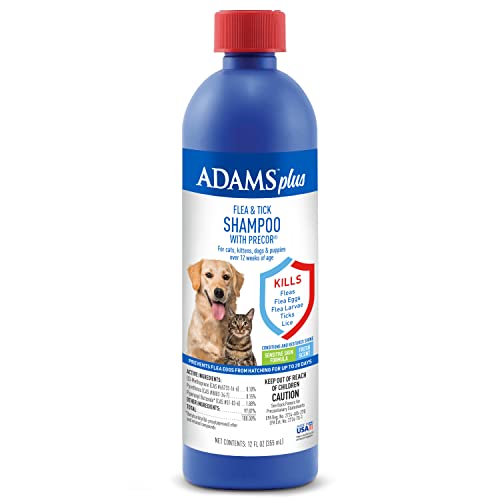
Nab a 12 ounce bottle at Amazon and hide it from your furry friends, or you run the risk of them vanishing into thin air like mine do.
Spot treatments are those that are applied to the skin and settle in the skin’s glands to repel or kill insects that come in contact with it. Spot treatments often kill multiple different pests.
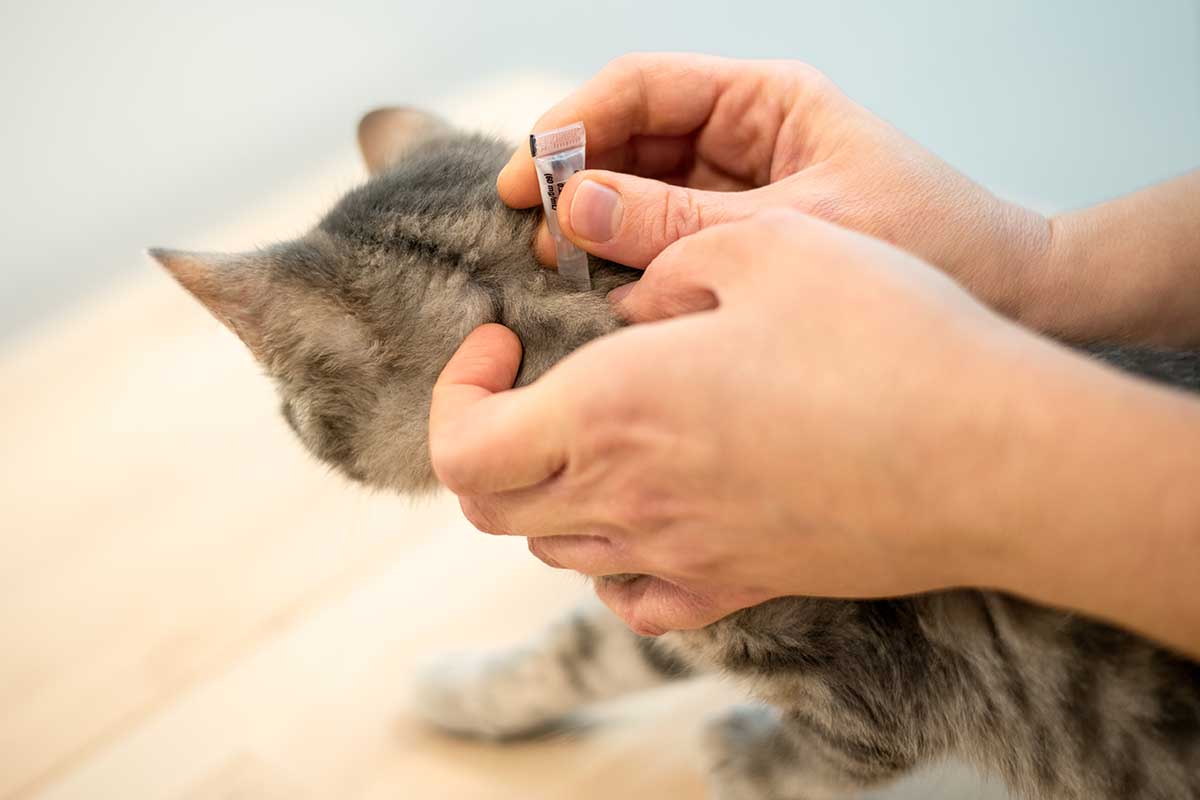
One treatment might address mosquitos, fleas, lice, ticks, and biting flies.
Many of these topical treatments use ingredients that have been proven to be effective, such as permethrin, fipronil, or imidacloprid.
Advantage II is one option that harnesses imidacloprid and pyriproxyfen to keep your cat safe from infestation. Pick up four doses, which should be applied monthly, at Amazon.

You can find a version for dogs, also available at Amazon.
Other treatments applied to the skin are absorbed into your pet’s circulatory system. These kill pests by overstimulating their nervous system once they ingest blood that contains the product.
Be aware that some oral and spot treatments have been found by the FDA to increase neurological issues such as seizures.
Products in the isoxazoline class cross the blood-brain barrier and can cause symptoms in animals that were previously symptom-free or exacerbate those with existing conditions.
Be sure to chat with your vet if you have any concerns.
I choose to avoid these products on my epileptic dog on the advice of her neurologist just to be safe, but everyone needs to decide what’s best for them and their individual situation.
If whichever product you’re using works, you’ll probably start to see fleas on your pet at the end of the hairs or fur, rather than at the base, near the skin. The dead bodies migrate out and away from the skin, so it’s a good sign as it means your chosen product is working.
A Note of Caution:
Be aware that most treatments work either on dogs or on cats. There are treatments out there that will harm or kill your pet if you use one that’s intended for the other species.
Always consult your veterinarian before administering any medication to your pets and be sure to follow the manufacturer’s instructions for use.
Every one of these options has the potential for some kind of downside.
Collars can cause irritation in the neck area, shampoos can cause skin irritation, dips and sprays can cause vomiting, and some pets are more sensitive to chemical treatments than others.
Always consult your veterinarian for more information and whether your chosen treatment is appropriate for your pet.
The only flea treatment that doesn’t have any side effects is the use of a flea comb.
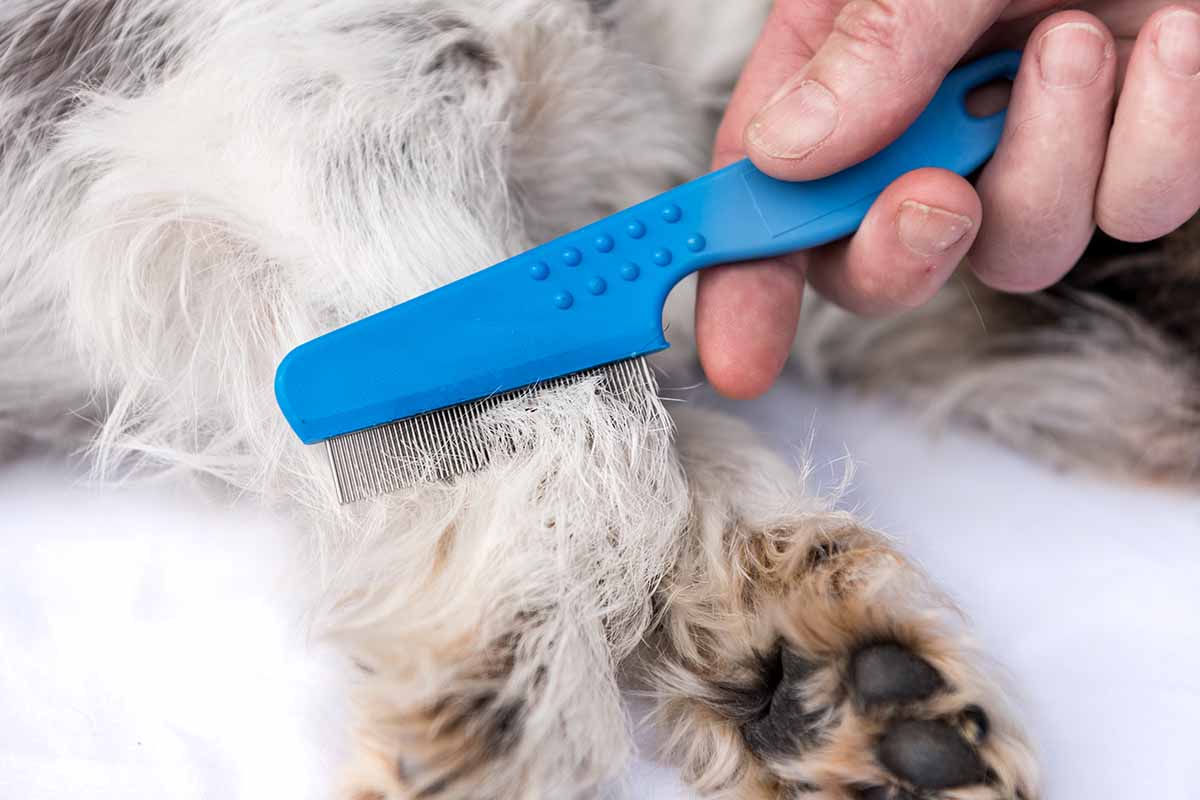
But it’s also the most time consuming and challenging method. You’ll need to comb your pet daily, moving slowly through their fur, and then deposit any pests you find in soapy water to drown them.
It’s time-consuming but think of it as bonding time between you and your pet.
Flea traps can also help you capture the adults and larvae living in bedding areas, but they won’t control the ones living on your pet.
Your Pet Will Thank You
It can take months to completely eliminate an infestation, particularly if you have to deal with removing mice or other vermin from your attic, have several pets, and/or you have limitations on what products you can use.
Keep at it, I promise it’s possible to rid yourself of them and your best friend will be so glad you did. You will, too.

When did you first realize you had a problem? What techniques will you use to deal with it? Let us know in the comments section below so others can learn from your experiences.
And if you want to learn more about how to deal with pests in your home and yard, check out these guides next: